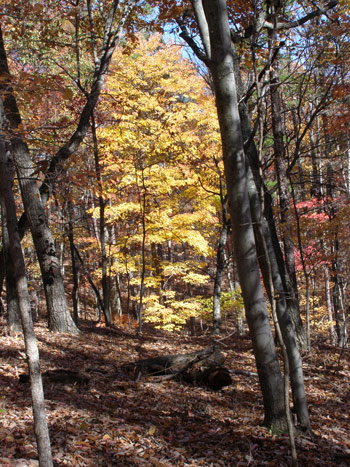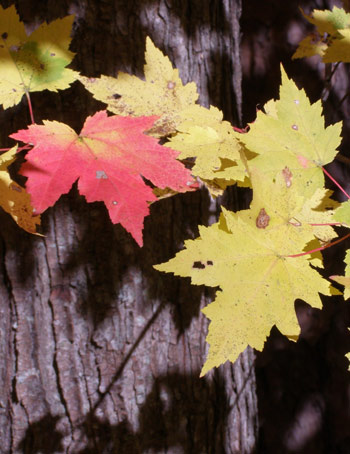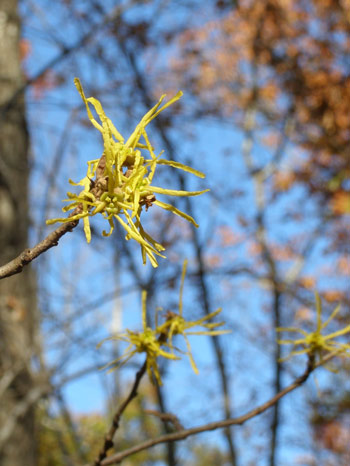So many colors

From a distance, this yellow red maple looks like a hickory. Photo by Ken Moore
By Ken Moore
Flora Columnist
Emerging from the forest interior last week, the afternoon sun was dazzling on the big tree ahead. That brilliant yellow made me think first of hickory trees, which, along with tulip poplars, southern sugar maples and elms, are the common local trees most associated with yellow fall colors.
Walking across the opening to take a closer look, I quickly altered my reasoning. Opposite simple leaves (definitely not hickory leaves, which are alternate compound leaves) with sharp angles between the leaf lobes and margins of sharp pointed teeth screamed out to me, red maple!
Indeed, I should have known better. That yellow was not the rich golden yellow (like yellow mixed with a bit of mustard) characteristic of our hickories. I had forgotten the description from Fall Color and Woodland Harvests by Bell & Lindsey, a recommended companion for any woods-walker in the fall.
But aren’t red maples supposed to be red? Well, usually they are; that’s one of the special attractions of fall in New England and the Carolina mountains. Red maple commonly occurs east of the Mississippi all the way from southern Canada down deep into Florida. With that broad natural occurrence, we can expect regional variations. Red maples seem most predictably red in cooler climatic regions. Here in the Piedmont, magnificent red red maples occur only occasionally. Hereabouts, I find myself most frequently looking at yellow red maples.
Now this particular yellow red maple was special, as so many of them are. Here and there, scattered among the yellow, were a few brilliant red leaves. It’s curious how nature expresses itself.

Our local yellow-red maples often bear singular red leaves. Photo by Ken Moore
When shorter and cooler days halt the production of a plant’s green pigment chlorophyll, the ever-present yellow pigments carotin and xanthophyll are then allowed to express shades of yellow.
The red and orange colors of black gum, sassafras and some of the maples erupt from anthocyanin compounds, which are produced by sugars and starches in the leaves after cessation of chlorophyll production.
While some tree species are characteristically yellow or red and orange, others, like some maples and the sweet gum, contain all these pigments. Variables of environmental influences from year to year result in the dazzling diversity of colors we enjoy. My favorite of all trees is the sweetgum, which year after year can exhibit all colors on the same tree.
I had returned last week to where the fall flora class two weeks ago determined that we had found peak color. Though the recent wind and rain had reduced much of the color of that particular scene, there remained many spots of peak color showing off all around. Combined with the subtle beauty of the emerging winter landscape and a surprise encounter with a group of flowering witch hazels, Hamamelis virginiana, I became aware of a wonderful spiritual and sensory overload.
So here’s a challenge for you. As peak color continues, overlapping with an emerging winter landscape, go exploring outdoors this week to discover your own sensory overload.
Email Ken Moore at flora@carrborocitizen.com. Find previous Ken Moore Citizen columns at The Annotated Flora (carrborocitizen.com/flora).

With a sharp eye, you will spot witch hazel flowering in local forests. Photo by Ken Moore


Comments are closed.